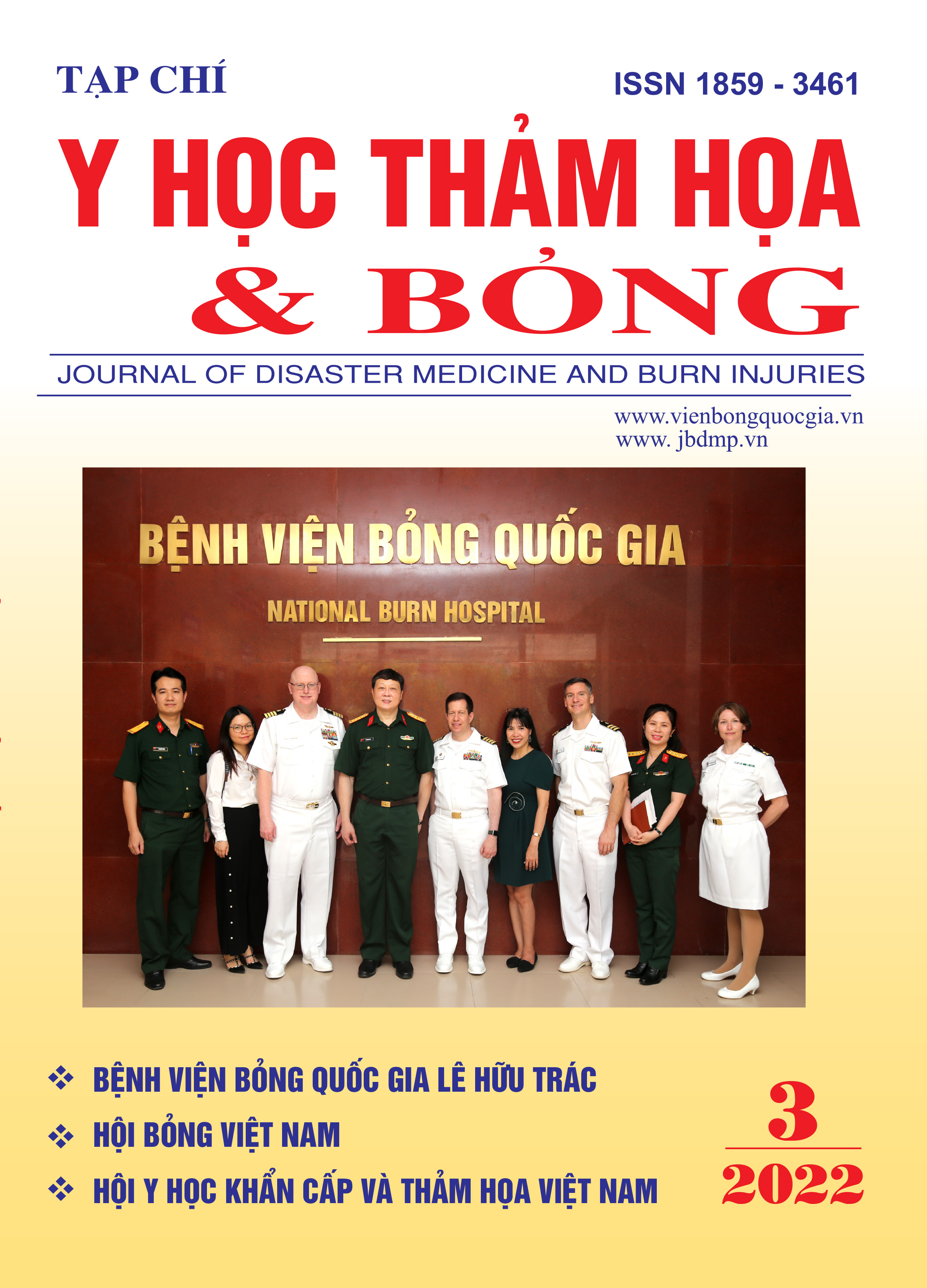Surgical excision and adjuvant radiotherrapy for keloid patients
Main Article Content
Abstract
Keloids represent a kind of superficial benign tumor that grows aggressively in response to dermal injury, which was characterized by overproduction of collagen and local fibroblast proliferation. Patients suffering from keloids often complain of unwanted symptoms such as pruritus, pain, skin infection and aesthetic problems. Up to now, the treatment of keloids is still a challenge, the recurrence rate is still high when applying each therapy alone.
From the beginning of 2021, for the first time in Vietnam, the hospital has applied the superficial radiation system with the SRT 100, Sensus Healthcare - USA, for patients after keloids surgery, nonmelanoma skin cancer, Here, we present a case report.
Article Details
Keywords
Keloids, superficial radiation system
References
2. Ogawa R. Keloid and Hypertrophic. Scars Are the Results of Chronic Inflammation in the Reticular Dermis. Int J Mol Sci 2017; 18(3): 606.
3. Michael H Gold, Mark S Nestor, Brian Berman, David Goldberg: Assessing keloid recurrence following surgical excision and radiation, Burns Trauma 2020 Nov 14.
4. Akaishi S, Akimoto M, Ogawa R, Hyakusoku H. The relationship between keloid growth pattern and stretching tension: visual analysis using the finite element method. Ann Plast Surg 2008; 60: 445-451.
5. Ogawa et al. Diagnosis and Treatment of Keloids and Hypertrophic Scars-Japan Scar Workshop Consensus Document 2018, Burns & Trauma, (2019) 7:39
6. Nestor MS, Berman B. Consensus Guidelines on the Use of Superficial Radiation Therapy for Treating Nonmelanoma Skin Cancers and Keloids. J Clin Aesthet Dermatol. 2019 Feb;12(2):12-18. Epub 2019 Feb 1.
7. Ogawa R, Yoshitatsu S, Yoshida K, Miyashita T. Is radiation therapy for keloids risk of radiation-induced carcinogenesis acceptable? The. Plast Reconstr Surg 2009; 124: 1196-1201.
8. Muneuchi G, Suzuki S, Onodera M, Ito O, Hata Y, Igawa HH. Long-term outcome of intralesional injection of triamcinolone acetonide for the treatment of keloid scars in Asian patients. Scand J Plast Reconstr Surg Hand Surg. 2006;40:111-116.
9. Ogawa R, Miyashita T, Hyakusoku H, Akaishi S, Kuribayashi S, Tateno A. Postoperative radiation protocol for keloids and hypertrophic scars: statistical analysis of 370 sites followed for over 18 months. Ann Plast Surg 2007; 59: 688-691.
10. Lee, S.Y.; Park, J. Postoperative electron beam radiotherapy for keloids: Treatment outcome and factors associated with occurrence and recurrence. Ann. Dermatol. 2015, 27, 53-58. [CrossRef]
11. Kuribayashi, Miyashita, T, Ozawa, Y, et al. Post-keloidectomy irradiation using high-dose-rate superficial brachytherapy. J Radiat Res 2011; 52: 365-368.
12. Puri N and Talwar A. The efficacy of silicone gel for the treatment of hypertrophic scars and keloids. J Cutan Aesthet Surg 2009; 2(2): 104-106.
13. Ogawa R, Hyakusoku H, Akaishi S, et al. Intraoperative piercing for earlobe keloid. Ann Plast Surg. 2007;59:354-355.
14. Bischof M, Krempien R, Debus J, et al. Postoperative electron beam radiotherapy for keloids: objective findings and patient satisfaction in self-assessment. Int J Dermatol. 2007;46:971-975.
15. Yossi S, Krhili S, Mesgouez-Nebout N, et al. Adjuvant treatment of keloid scars: electrons or brachytherapy? Cancer Radiother. 2013;17:21-25


